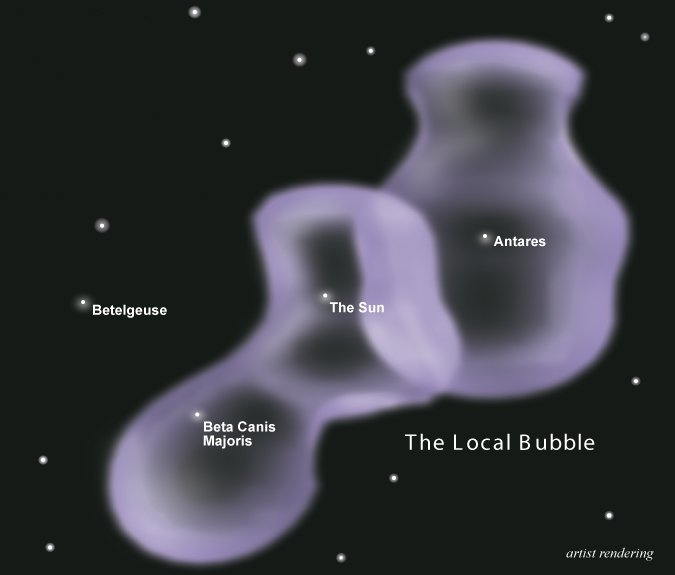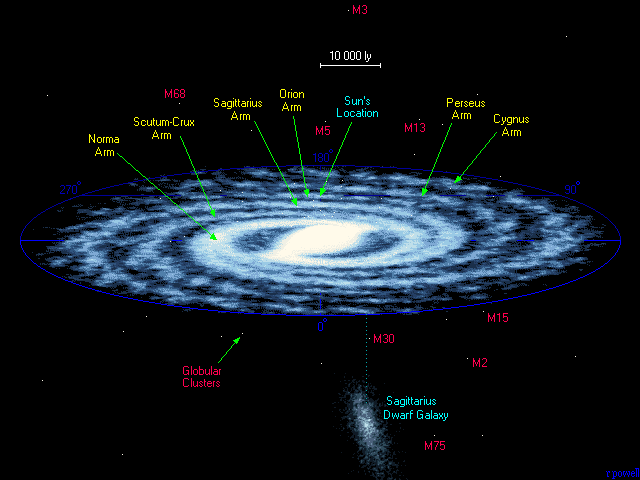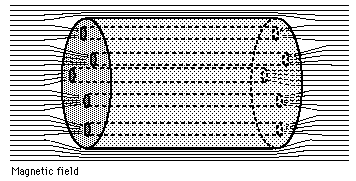A humongous gaseous plasma coronal cloud bubble surrounds and engulfs the milky way galaxy, likely interacting with Andromeda's bubble. The distance the bubble extends is vastly unknown, but it engulfs the large and small magellanic clouds. Plasma magnetohydrodynamics better describes scientific truth for what gravity cosmologists purportedly call just a "superheated gas cloud or gas pool." CORONAL GALAXY CLOUD : Wikiversity.org. The galactic corona was first predicted and theorized by nobel prize winning astrophysicist Haanes Alfven. Conventionally accepted dogmatic big-bang gravity theorists are still purporting phony cosmology theories, and trying to explain all the missing gravity for galaxies as dark matter. They are just calling this a "hot intergalactic cloud of gas." Gaseous filaments at these extreme high temperatures are scientifically proven to be in the realm for plasma astrophysicists, not gravity cosmologists. Small amounts of moving charges are intrinsic to plasmas, and far more responsible for shaping and ruling the universe by the fundamental force of electromagnetism. New findings by the trio of Chandra X-ray satellites shows that the enormous sized superheated gas cloud is between 1 to 2.5 million degrees kelvin, and entirely surrounding our milky way galaxy. Charged oxygen atoms were detected absorbing X-ray light at this temperature range around the galaxy in the outer galaxy halo. All galaxies, especially those similar to our milky way, can be presumed to also be embedded and swimming inside gigantic hot plasma gas pools. The outer galaxy halo is several hundred times hotter than our sun's surface, and between 10 to 60 billion solar masses. Astronomer Smita Mathur of Ohio State University says "the outer, hotter gas halo may extend for a few thousand light years around our milky way galaxy, or it may extend farther out into the surrounding local group of galaxies." The new findings show the newly discovered "outer, hotter gas halo" is much larger than the previously discovered warm hot intergalactic medium or WHIM filaments. The WHIM is between 100,000 - 1 million degrees kelvin, and far smaller in size. Stars have been shown to form inside the spiral arms of galaxies by condensation of the cooler gaseous intergalactic filaments. The estimated density of this gas halo is so low that similar halos around other galaxies evade current detection methods. All the talk about finding and solving the mystery of the missing baryons of the universe by this new discovery, are foolish theory conjectures. Unmeasurable by detection methods, plasmas are known to have moving charges by electromagnetic forces far stronger in strength over vast distances than the gravitational mass of the gas. This produces cosmic-scale electric and magnetic fields requiring further complex plasma mathematics, but correctly mimics and replaces the phony devised relativity interpretation having numerous problems. This is what should really matter in any cosmology of the universe. The new findings strongly support plasma cosmology.
| Enormous Milky Way Gas Cloud |
| the milky way galaxy swims inside a giant hot (PLASMA) outer gas cloud or pool of gas. The photo shows a 300,000 light year size radius of gas in the outer halo, that extends beyond the LMC and SMC. It could be far larger in radius, with fractal organized structures. |
 |
| the milky way galaxy's GALACTIC CORONA |

Cosmic-scale FRACTAL DUSTY filamentary plasma gas bubbles and magnetic fields are fundamentally responsible for star formation and galaxies interacting. The hottest plasmas known in the universe are found in densely packed galaxy clusters. In a galaxy cluster the extremely hot plasma is known to comprise 90% of the mass of the galaxy cluster, with only 10% of the mass from it's constituent galaxies.
Flowing Plasma in the Orion Nebula |
| the Orion Nebula plasma gas bubbles found in 2008 are believed to be from plasma flowing and permeating the fractal filamentary universe. |
 |
| The size of the milky way galaxy and inner halo |









No comments:
Post a Comment